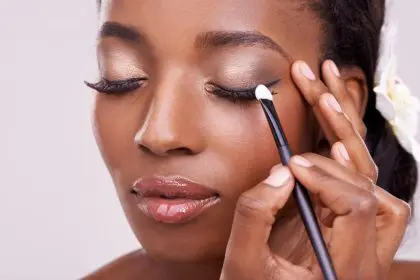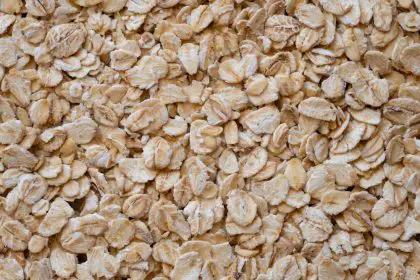Those horizontal lines across your forehead can appear earlier than expected, sometimes showing up in your late twenties or early thirties. While completely natural, these expression lines often become a cosmetic concern for many. The good news is that numerous evidence-backed options exist to reduce their appearance without resorting to surgery.
Understanding why forehead wrinkles form
Forehead wrinkles develop primarily from a combination of factors that affect the skin over time. Repeated facial expressions, particularly raising your eyebrows, create dynamic lines that eventually become permanent fixtures. As we age, our skin loses crucial components that previously kept it smooth and resilient.
- Collagen production decreases approximately 1% annually after age 20
- Elastin fibers become less effective at helping skin bounce back
- Hyaluronic acid levels diminish, reducing moisture retention
- Subcutaneous fat thins, providing less cushioning under the skin
- Sun exposure accelerates these processes through photoaging
Genetics also play a significant role in determining when wrinkles appear and how pronounced they become. Some individuals naturally have stronger facial muscles that create deeper expression lines, while others inherit skin qualities that resist wrinkling longer.
Targeted skincare ingredients that deliver results
The cornerstone of any wrinkle-reduction strategy begins with effective skincare. Certain ingredients have demonstrated impressive abilities to minimize the appearance of forehead lines when used consistently.
Retinoids stand as the gold standard for wrinkle reduction. These vitamin A derivatives increase cell turnover, stimulate collagen production, and improve skin texture. Prescription-strength tretinoin provides the most dramatic results, but over-the-counter retinol products can deliver significant improvements when used consistently for 8-12 weeks.
Peptides serve as another powerful ingredient category. These amino acid chains signal your skin to produce more collagen and elastin. Look specifically for products containing argireline (acetyl hexapeptide-3), which targets the muscle movements that create expression lines.
Antioxidants protect skin from free radical damage while supporting repair processes. Vitamin C not only brightens complexion but also supports collagen synthesis. Niacinamide (vitamin B3) reduces inflammation and improves skin barrier function, while resveratrol offers protection against environmental aggressors.
Hyaluronic acid remains essential for maintaining moisture levels. This molecule holds up to 1,000 times its weight in water, instantly plumping skin and temporarily reducing the depth of wrinkles. Products containing multiple molecular weights of hyaluronic acid penetrate different skin layers for enhanced results.
Growth factors, derived from various sources including plant cells and biotechnology, help activate the skin’s natural repair processes. These specialized proteins can support collagen production and skin regeneration when formulated properly in skincare.
Professional treatments with minimal downtime
When at-home approaches aren’t delivering sufficient results, professional interventions offer more dramatic improvements without surgery.
Neuromodulator injections temporarily relax the frontalis muscle that creates forehead wrinkles. The treatment takes minutes to perform, with results developing over 3-7 days and typically lasting 3-4 months. By preventing the repeated muscle contractions that create wrinkles, these injections not only improve existing lines but also prevent deeper ones from forming.
Dermal fillers provide immediate volume restoration. Hyaluronic acid fillers can be strategically placed to support skin structure and smooth out deeper forehead lines. Results typically last 6-12 months depending on the specific product used and individual metabolism.
Microneedling creates controlled micro-injuries that stimulate the skin’s healing response. This process increases collagen production in targeted areas. When combined with radiofrequency energy, the treatment penetrates deeper layers for enhanced results. Most patients require 3-4 sessions spaced one month apart for optimal improvement.
Laser resurfacing removes damaged outer layers of skin while stimulating collagen in deeper layers. Fractional lasers create thousands of microscopic treatment zones, allowing for faster healing than traditional lasers. Options range from gentle non-ablative treatments with minimal downtime to more aggressive ablative procedures that deliver more dramatic results but require longer recovery.
Thread lifts provide subtle lifting using dissolvable sutures placed under the skin. This minimally invasive option lifts tissue while stimulating collagen formation around the threads. Results can last 1-3 years as the threads gradually dissolve.
Facial exercises that target forehead muscles
Facial yoga and targeted exercises have gained attention for their potential to tone underlying muscles and improve skin appearance without any products or procedures.
The forehead smoother exercise begins by placing both palms on your forehead, fingers facing inward. Apply gentle pressure while trying to raise your eyebrows against the resistance. Hold for 5 seconds, then release. Repeat 10 times daily.
The eyebrow press involves placing index fingers above each eyebrow, pressing gently against the skin. Close your eyes tightly while pressing downward with your fingers for resistance. Hold for 10 seconds and release. Perform 5 repetitions daily.
For the frontalis release, place fingertips at hairline and gently pull upward. Simultaneously try to lower your eyebrows against this resistance. Hold for 8 seconds, release, and repeat 8 times.
These exercises work by creating more conscious control over muscles that often contract unconsciously during expressions. With consistent practice over 8-12 weeks, many practitioners report improved muscle tone and reduced appearance of wrinkles.
Lifestyle modifications with significant impact
Beyond products and treatments, several lifestyle factors heavily influence how quickly forehead wrinkles develop and how pronounced they become.
Sun protection stands as the single most important preventive measure against premature wrinkles. Daily application of broad-spectrum SPF 30+ sunscreen, even on cloudy days, shields skin from UVA rays that penetrate glass and cloud cover. Physical sunscreens containing zinc oxide or titanium dioxide provide immediate protection upon application.
Sleep position affects wrinkle formation more than commonly recognized. Side and stomach sleepers often develop “sleep lines” from facial compression against pillows. Training yourself to sleep on your back prevents this mechanical wrinkling. Silk or satin pillowcases create less friction and compression than cotton alternatives.
Dietary choices directly impact skin health. Foods rich in omega-3 fatty acids support skin’s lipid barrier, while antioxidant-rich fruits and vegetables combat free radical damage. Excessive sugar consumption accelerates glycation, a process that damages collagen and elastin fibers. Maintaining proper hydration ensures skin cells function optimally.
Stress management techniques help reduce unconscious furrowing of the brow. Mindfulness practices increase awareness of facial tension, allowing you to consciously relax these muscles throughout the day. Regular meditation reduces cortisol levels that can break down collagen and accelerate aging.
Prevention strategies for younger skin
Those in their twenties and thirties can implement preventive measures before deep wrinkles form. Early intervention typically yields better long-term results than waiting to address established wrinkles.
- Develop expression awareness by noting when you furrow your brow or raise eyebrows
- Use physical reminders like app alerts to check for facial tension throughout the day
- Start using retinol products in your late twenties, beginning with lower concentrations
- Wear sunglasses outdoors to prevent squinting that creates crow’s feet and forehead lines
- Consider preventive neuromodulator treatments before deep lines become established
Consistent skincare routines established early create cumulative benefits over time. Morning protection with antioxidants and sunscreen, followed by evening repair with active ingredients, provides 24-hour care.
Makeup techniques for instant wrinkle camouflage
While working on longer-term solutions, specific makeup approaches can instantly minimize the appearance of forehead wrinkles.
Silicone-based primers fill in fine lines, creating a smoother canvas before foundation application. These products temporarily fill wrinkles much like spackle fills wall cracks. Apply with gentle pressing motions rather than rubbing for best results.
Foundation selection makes a significant difference. Avoid matte, powder-based formulas that settle into lines. Instead, choose hydrating, light-reflecting liquid foundations with “luminous” or “radiant” in their description. Apply sparingly with a damp makeup sponge, pressing gently rather than wiping.
Strategic highlighting places light-reflecting particles above and below wrinkle areas rather than directly on lines themselves. This technique draws attention away from wrinkles while creating the illusion of plumper skin.
Setting techniques matter tremendously. Rather than all-over powdering, use a small brush to apply translucent powder only in areas that tend to become oily, avoiding forehead lines. Setting sprays with hyaluronic acid maintain hydration throughout the day.
Finding your personalized wrinkle-reduction plan
The most effective approach to forehead wrinkle reduction typically combines several strategies tailored to your specific concerns, age, budget, and lifestyle. Younger individuals with fine lines might achieve significant improvement with topical products and preventive measures alone. Those with more established wrinkles often benefit from combining professional treatments with comprehensive skincare.
Consistency remains the most crucial factor regardless of which methods you choose. Collagen production and skin cell turnover require time, with most interventions showing progressive improvement over 8-12 weeks of regular use.
While completely eliminating forehead wrinkles may not be realistic without surgical intervention, significantly reducing their appearance is achievable through these evidence-based approaches. With the right combination of prevention, topical treatments, professional interventions, and lifestyle adjustments, smoother, more youthful-looking skin is within reach.


















